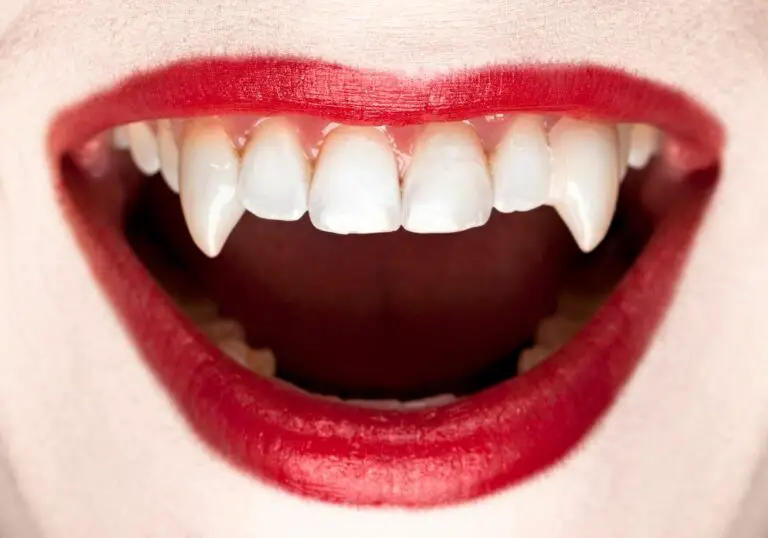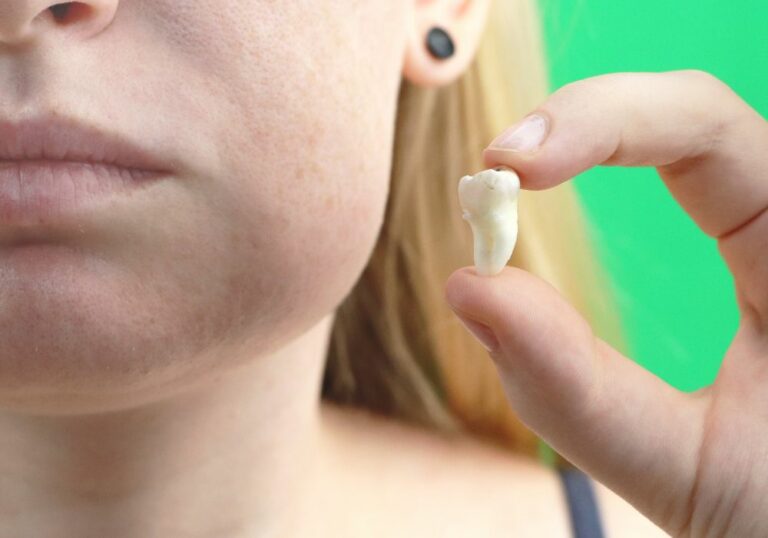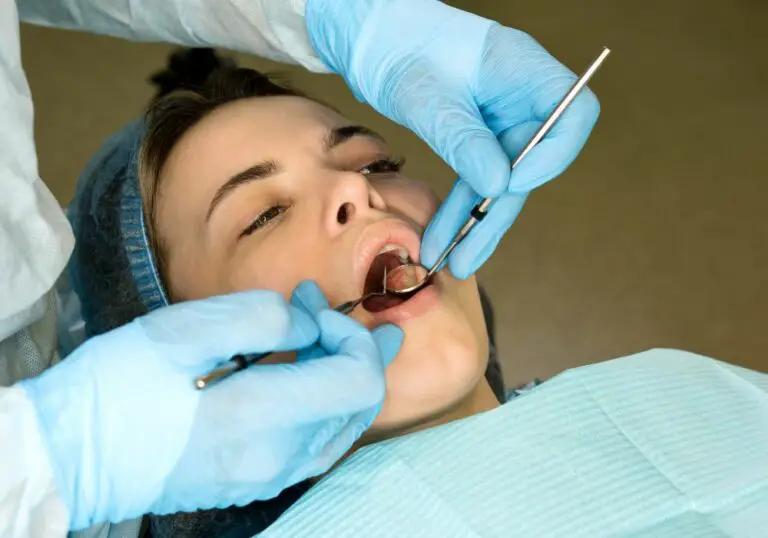Dolphins are many people’s favorite marine animals and we can certainly understand why. It’s very difficult not to love that curved toothy smile or not to admire these predators’ grace, beauty, and intelligence.
You also probably won’t be surprised that there are a lot of extra interesting tidbits and factoids about dolphins’ teeth that make them even more fascinating to us. For example, did you know that dolphins don’t actually smile cause they don’t have the facial muscles for it? Their jaws are just shaped that way so they look like they are constantly smiling.
Other interesting questions include – how many teeth do dolphins have, why do they vary so much, how do they use them exactly, and much more. Let’s explore those below.
How Many Teeth do Dolphins Have?
Unlike their cousins, the whales, all dolphins have teeth. Dolphins are odontocetes or toothed cetaceans just like some whales such as beaked whales, sperm whales, as well as porpoises.
When looking into how many teeth a dolphin have, however, you’ll likely see many different numbers. There are many reasons for that. For starters, there are about 40 different dolphin species in the world, each with a different number of teeth. About 30 of those ~40 species are oceanic dolphins belonging to the Delphinidae family whereas the rest are members of the Platanistidae, Iniidae, and Pontoporiidae river dolphin families.
Between all these dolphins, you’ll encounter some with several dozen teeth, some with more than 200 teeth, and some with just a dozen or so teeth. What’s even more curious is that dolphins have differing numbers of teeth even among the same species. That’s because dolphins’ teeth aren’t as multi-functional as other animals’ teeth. In fact, for most of them, their teeth serve only one major purpose – to grip onto their slippery prey while the dolphins swallow it.
This makes most dolphins homodonts – animals with only one type of teeth. In contrast, the vast majority of other mammals, including humans are heterodonts – they have various different types of teeth such as canines, incisors, molars, and premolars.
So, as you can see, there is no one answer to the question “How many teeth do dolphins have?”, at least not an exact one. The widest and most accurate range would be between 4 and 268 teeth but most dolphins are somewhere in the 100 to 200 range.
What do dolphins use their teeth for?
This can seem like a silly question but it isn’t, not really. Most animals use their teeth for a variety of reasons – to grip their prey, to suffocate it or sever key blood vessels, to tear flesh, to chew, to graze, to ruminate cud, to break bones or hard shells, as well as for self-defense, for dueling, or even as tools.
Most of these don’t apply to dolphins, however. These marine mammals don’t chew and often don’t even try to kill their prey with their teeth. Instead, they just use their teeth to grip their slipper prey between their upper and lower jaws and then just swallow their prey whole.
This singular purpose of dolphins’ teeth is exactly why dolphins are homodonts. Whether they are among the dolphin species that roam the largest freshwater rivers or they are oceanic dolphins spending their whole lifetime somewhere between the coast of New England in the Western North Atlantic and the southernmost edges of the Indian and Pacific Oceans – almost all of them have the same simple yet effective hunting technique that works versus a wide variety of prey items thanks to their spade-shaped fang-like dolphin teeth.
What do dolphins eat?
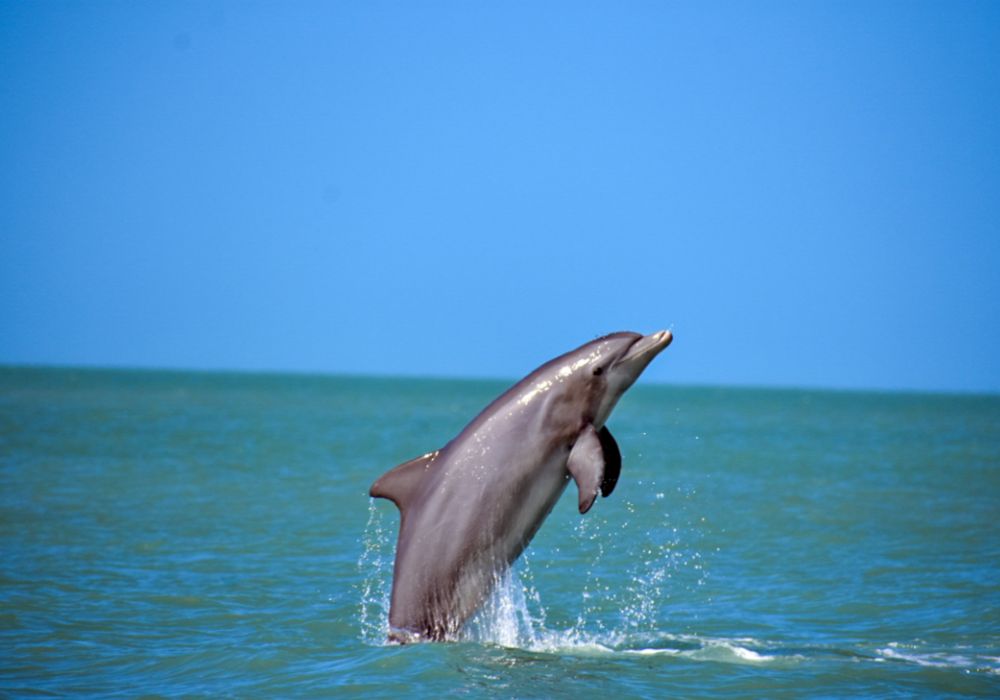
As the highly adaptable cetaceans they are, dolphins have pretty adaptable diets. They can eat a wide variety of fish, squid, octopus, krill, and even penguins and seals if we’re talking about orcas, the largest member of the oceanic dolphin family.
That said, different species of dolphin have their preferences. For example, the Risso’s favorite food is squids which is why these dolphins only have 4 to 14 teeth in their mouths – they don’t need more than that. On the other hand, the Amazon River dolphin specializes in eating crabs and turtles in addition to fish. That’s why these are among the very few heterodont dolphins that have a second type of tooth–flatter molar-like teeth at the back of their mouths that they use to break the shells of their prey.
Larger dolphins like the orca, on the other hand, go almost exclusively after larger prey such as seals and penguins. In those cases, they don’t use their teeth merely to grip their prey and suck it in their mouths but they actually use their teeth to tear pieces off the victim and eat them bit by bit.
Aside from some such exceptions, however, the vast majority of dolphins go after a wider variety of prey and have the same type of teeth that they use in the same way.
What is dolphin “raking”?
Dolphins do have one additional use for their teeth and that’s a practice called “raking”. It’s what some dolphins do to each other when they want to establish dominance. Dolphins of almost all types live in pods of a dozen or so members and they do have a rather strict hierarchy – the older and more experienced members typically lead while the younger ones follow.
As you’d expect, younger dolphins occasionally need to be “reminded” of their place in the hierarchy, so, an older dolphin does this by dragging some of their teeth on the skin of their less-than-obedient pod member. This “raking” isn’t meant to be damaging – it’s not biting and it doesn’t tear into the other dolphin’s flesh. However, it does live marks on the skin.
Can you really tell a dolphin’s age by looking at its teeth?
You may have heard that we can tell a dolphin’s age by looking at its teeth similarly to how we can tell the age of a tree by counting its rings. And that is indeed true – during necropsies, i.e. dolphins’ autopsies, scientists can look at the layers of their teeth. This works as a method because dolphins’ teeth grow a new layer every year.
What’s also interesting is that baby dolphins don’t have “milk teeth” like many other mammals. Instead, the newborn dolphin teeth that are still in their gums start growing out around the third month of the dolphin’s life and they are the only set they have.
Number of Teeth Per Dolphin Specie:
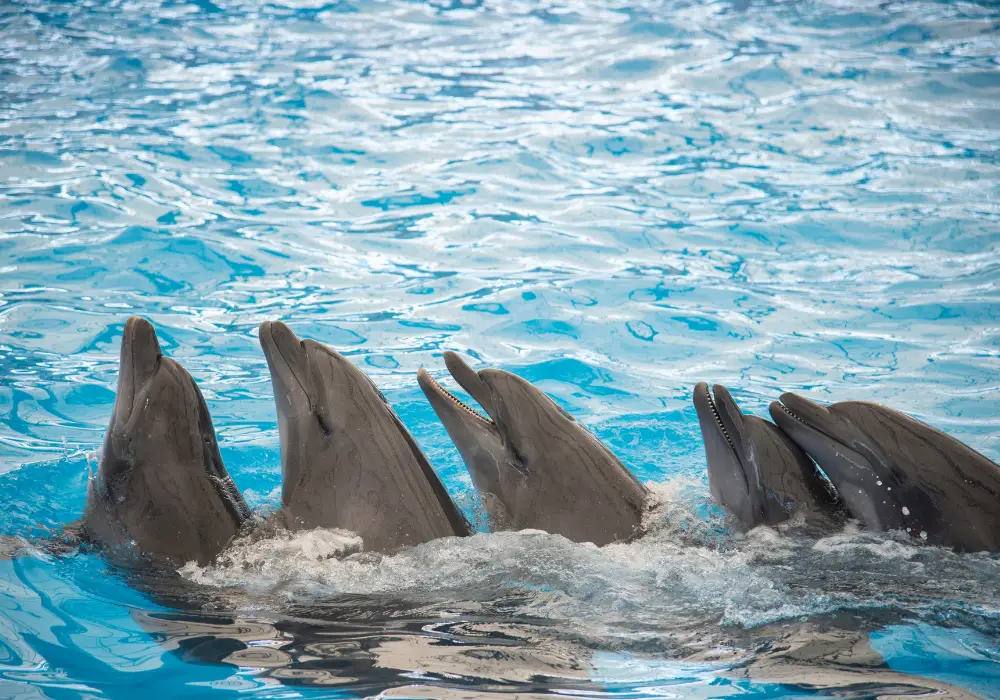
Below we’ve listed the indicative number of teeth per dolphin species. You’ll notice that there is quite a lot of variation even within a single species. This likely is because dolphins haven’t really faced a lot of evolutionary pressure to evolve a “best” number of teeth – whether with 144 or with 208 teeth, a Clymene dolphin will still be able to catch prey without much issue, for example.
- Amazon River dolphin – 96 to 136 teeth
- Arabian common dolphin – ~114 teeth
- Atlantic Humpback dolphin – 104 to 124 teeth
- Atlantic Bottlenose dolphin – 86 to 100 teeth
- Atlantic white-sided dolphin – 120 to 160 teeth
- Australian snubfin dolphin – 88 to 176 teeth
- Chilean dolphin – 114 to 134 teeth
- Chinese River dolphin – 120 to 134 teeth
- Chinese white dolphin – 100 to 160 teeth
- Clymene dolphin – 144 to 208 teeth
- Commerson’s dolphin – 102 to 120 teeth
- Common bottlenose dolphin – 72 to 116 teeth
- Costero dolphin – 104 to 144 teeth
- Dusky dolphin – 96 to 144 teeth
- False killer whale – 32 to 52 teeth
- Franciscana dolphin or La Plata dolphin – 200 to 252 teeth
- Fraser’s dolphin – 80 to 176 teeth
- Ganges River dolphin – 116 to 144 teeth
- Hector’s dolphin – 96 to 124 teeth
- Hourglass dolphin – 96 to 144 teeth
- Indian Humpback dolphin – 120 to 136 teeth
- Indian Ocean or Indo-Pacific bottlenose dolphin – 92 to 116 teeth
- Indus River dolphin – 104 to 154 teeth
- Irrawaddy dolphin – 48 to 80 teeth
- Long-beaked common dolphin – 188 to 268 teeth
- Long-finned pilot whales – 72 to 96 teeth
- Melon-headed whale – 80 to 104 teeth
- Northern right whale dolphin – 148 to 216 teeth
- Orca (killer whale) – 40 to 56 teeth
- Pacific Humpback dolphin – 120 to 136 teeth
- Pacific white-sided dolphin – 92 to 104 teeth
- Pantropical spotted dolphin – 138 to 190 teeth
- Peale’s dolphin – 136 to 264 teeth
- Pygmy killer whale – 32 to 52 teeth
- Risso’s dolphin – 4 to 14 teeth
- Rough-toothed dolphin – 76 to 112 teeth
- Short-beaked common dolphin – 200 to 240 teeth
- Short-finned pilot whales – 56 to 72 teeth
- Southern right whale dolphin – 136 to 156 teeth
- Spinner dolphin – 180 to 260 teeth
- Striped dolphin – 172 to 200 teeth
- Tucuxi dolphin – 104 to 144 teeth
- White-beaked dolphin – 88 to 112 teeth
In Conclusion
Dolphins are fascinating creatures in many ways and their unique dental characteristics are a good example of that. Their smiley mouths are almost always full of hundreds of teeth yet they aren’t really as multi-functional as the teeth of many other animals. The dolphin hardly care, of course, because, as single-purpose as they are, their teeth are exactly what these mammals need them to be.


